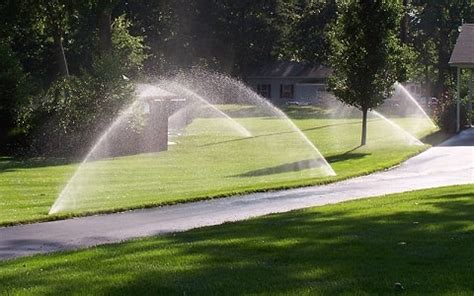Landscaping Upgrade: Adding a Zone to Your Sprinkler System
Adding a new zone to your sprinkler system might seem daunting, but it's a worthwhile landscaping upgrade that can significantly improve your lawn's health and save you water. Whether you're adding a new flower bed, expanding your lawn, or simply need more precise watering control, understanding the process can empower you to tackle this project yourself or confidently communicate your needs to a professional. This comprehensive guide will walk you through the steps, addressing common questions and concerns.
Why Add a Sprinkler Zone?
Before diving into the how-to, let's clarify why adding a zone is often a necessary upgrade. A sprinkler zone is a section of your yard controlled by its own valve and wiring. Common reasons to add a zone include:
-
Improved Watering Efficiency: Different areas of your yard have varying water needs. A single zone covering your entire lawn might overwater delicate plants while under-watering thirsty grass in sunny spots. Separate zones allow customized watering schedules and durations.
-
Targeted Watering: New plantings, like a vegetable garden or a newly seeded lawn area, require different watering schedules than established landscaping. A dedicated zone enables precise control without affecting the rest of your yard.
-
Handling Problem Areas: Is a section of your lawn consistently too dry or too wet? A dedicated zone allows you to address these issues directly without impacting other parts of your landscape.
-
Expanding Your Landscape: Adding a new garden bed, patio, or other landscaping features necessitates adding a new sprinkler zone to provide adequate watering.
What Tools and Materials Will I Need?
The exact materials will depend on your specific setup and the size of the new zone. However, you'll generally need:
- PVC pipe: Various sizes, depending on your existing system and the number of sprinkler heads.
- Sprinkler heads: Choose heads appropriate for the area you're watering (e.g., rotor heads for larger areas, spray heads for smaller, more precise coverage).
- Valve: A new valve will be needed to control the new zone. Choose a valve compatible with your existing system.
- Wire: Low-voltage wire to connect the new valve to your sprinkler controller.
- Wire nuts: For secure wire connections.
- PVC cement and primer: For joining PVC pipes.
- Backflow preventer (if necessary): Check local codes; you may need a new backflow preventer if adding a significant number of sprinkler heads.
- Shovel and digging tools: For trenching.
- Pipe cutter or saw: For cutting PVC pipes.
How Much Does it Cost to Add a Sprinkler Zone?
The cost varies greatly depending on factors such as the size of the new zone, the complexity of the installation, and material costs. A simple zone addition might cost a few hundred dollars in materials and labor, while a more extensive project could cost significantly more. Getting multiple quotes from reputable landscapers is recommended.
Can I Add a Sprinkler Zone Myself?
Yes, adding a sprinkler zone is a DIY project that many homeowners successfully undertake. However, it requires some plumbing and electrical knowledge. If you're uncomfortable working with PVC pipe, wiring, or electrical systems, it's best to hire a professional.
What are the Different Types of Sprinkler Zones?
You can broadly categorize sprinkler zones based on their watering needs:
- Lawn Zones: Typically utilize rotor heads for broad coverage.
- Garden/Flower Bed Zones: Usually employ spray heads for more targeted and gentle watering.
- Tree Zones: Employ specialized drip irrigation or other methods best suited for deep-root watering.
Choosing the right type of sprinkler head is crucial for optimizing water usage and plant health within each zone.
How Do I Plan the Layout of My New Sprinkler Zone?
Careful planning is essential for efficient watering. Consider:
- Water Pressure: Ensure adequate pressure to reach all sprinkler heads within the new zone.
- Sprinkler Head Spacing: Proper spacing is vital to achieve even coverage without overlap or gaps.
- Soil Type: Different soils retain water differently, influencing sprinkler head selection and watering schedules.
- Sun Exposure: Areas with more sun exposure will need more frequent watering.
Adding a sprinkler zone is a rewarding landscaping project that enhances your yard's beauty and health. By carefully planning and executing the installation, you can enjoy a more efficient and effective irrigation system for years to come. Remember to always prioritize safety and consult professionals if you're unsure about any aspect of the process.

